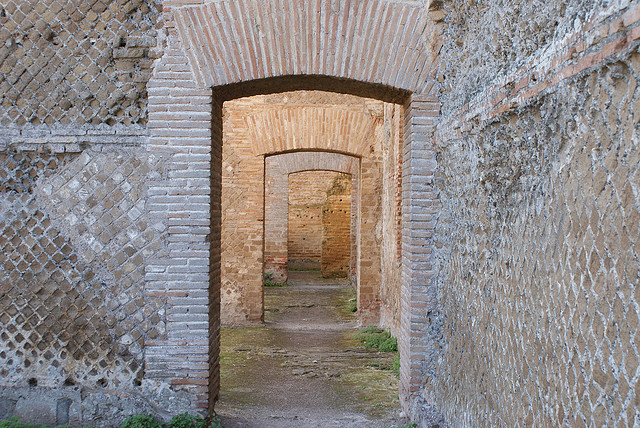Commentary on 1 Kings 5:1-5; 8:1-13
Solomon’s call is a perfect example of a call wherein God does not, or perhaps need not, intervene. In other words, there was no divine intervention in Solomon’s call. Rather, Solomon came to power when Nathan and Bathsheba collaborated to have the dying David appoint him to the office in order to thwart Adonijah’s attempted coup, saving their lives in the process.
Designation of Solomon’s Life’s Work and Approval by God
Interestingly, Solomon’s life’s work of building the temple was revealed by God, not to Solomon, but to his father David. David wanted to build a house for God. However, God forbade it because he was a warrior with much blood on his hands.
Although Solomon did not come to office by divine intervention, God clearly approved of Solomon. God visited Solomon in a dream and asked him what he wanted. God was pleased that Solomon responded by asking for wisdom to lead the nation. God was so pleased God promised not just wisdom, but riches as well. Solomon and centralized worship at the temple represents one God who is transcendent and immanent. It also represents the unity of the twelve family groups as one nation.
Known for Wisdom and Riches
Solomon’s wisdom was well-known. He wisely settled a dispute about motherhood between two women. Queen Sheba came to hear and see his wisdom for herself. His prolific writings are more evidence of his wisdom. As noted in 1 Kings 4:32, “He composed three thousand proverbs, and his songs numbered a thousand and five.” Tradition attributes Proverbs, Ecclesiastes, and the Song of Solomon to him.
Solomon also was well-known for his riches. He used Israel’s strategic geographic location on the trade route between Africa and Asia to build trade alliances that made Israel, and himself, wealthy.
Solomon’s Temple
The temple held deep meaning for the Israelite community. It was built on Mount Moriah where, had it not been for God’s intervention, Abraham would have sacrificed his son Isaac. Moreover, the temple was built on land that David purchased from Araunah at God’s command, to make a sacrifice to avert the death angel which had already killed 70,000 as punishment for the census David commanded. In other words, the temple was built on land where, despite dire circumstances with death on the horizon, life prevailed.
The temple was a seven-year joint project of Solomon and Hiram, King of Tyre. “Hiram’s Phoenicians supplied cedar and fir building materials. In exchange, Solomon’s Hebrews supplied food.”1 Detailed descriptions of the temple in 1 Kings 5-9 and 2 Chronicles 2-7 astound the imagination.
Like much of today’s construction, temple walls and objects were created elsewhere and brought to the building site where they were assembled and installed.2 Gold was everywhere, inside and out. Rich furnishings and decorations were made of the finest materials.
Artistic and architectural excellence made the temple something to behold. Unlike other temples, there were no gods anywhere in this temple. Instead of images of gods, there were decorations of palm trees, flowers, and cherubim, reminders of God’s creation. The Ark of the Covenant with two tablets of the Ten Instructions (Ten Commandments), Aaron’s rod, and some manna was all that was in the Holy of Holies. This sparsity was a reminder of the invisible God, the one God, transcendent and immanent, separate from yet inexorably connected to humanity and all creation.
Inaugural Worship Service
The ceremony dedicating the temple matched the magnificence of the building itself. An eight-day celebration marked its completion. It was a joyful occasion filled with glorious music, lots of instruments, and singers galore. The offering of “twenty-two thousand oxen and one hundred twenty thousand sheep” (1 Kings 8:63 and 2 Chronicles 7:5) was so large that extra space was required for the offerings.
One can imagine Solomon praying, making sacrifices and blessing the people at the inaugural worship service. His dedicatory speech and prayers are some of the most exquisite passages in the entire Bible. His speech makes it plain that even with all his work, he recognizes that God is beyond physical space. His prayer beautifully requests that God hear and answer not only the prayers of the people of Israel, but also the prayers of foreigners as well.
Remembering the Temple
Remembrances of Solomon’s temple call us to wholehearted worship. When the Woman at the Well asked a question about worship, Jesus explained that worship is not about a specific place, but is a matter of spirit and truth. We would do well to examine ourselves to be sure that our worship and our lives mirror the ideals of wholehearted worship in the temple as well as Jesus’s commandments to love God, others, and oneself, for they are indeed one.
Notes
- Kathleen Lusk Brooke and Zoe G. Quinn, “Building the World: Solomon’s Temple,” https://blogs.umb.edu/buildingtheworld/iconic-monuments/solomons-temple-israel/ (accessed June 1, 2021).
- Kathleen Lusk Brooke and Zoe G. Quinn, “Building the World: Solomon’s Temple,” https://blogs.umb.edu/buildingtheworld/iconic-monuments/solomons-temple-israel/ (accessed June 1, 2021).
PRAYER OF THE DAY
Mighty Lord,
The splendor of Solomon’s temple cannot compare to the majesty of your heart. Show your heart in this place, that we might worship you with joy and gratitude. Amen.
HYMNS
Built on a rock ELW 652
A mighty fortress ELW 503, 504
Open your ears, O faithful people ELW 519
CHORAL
God’s Son has made me free, Edvard Grieg



October 31, 2021